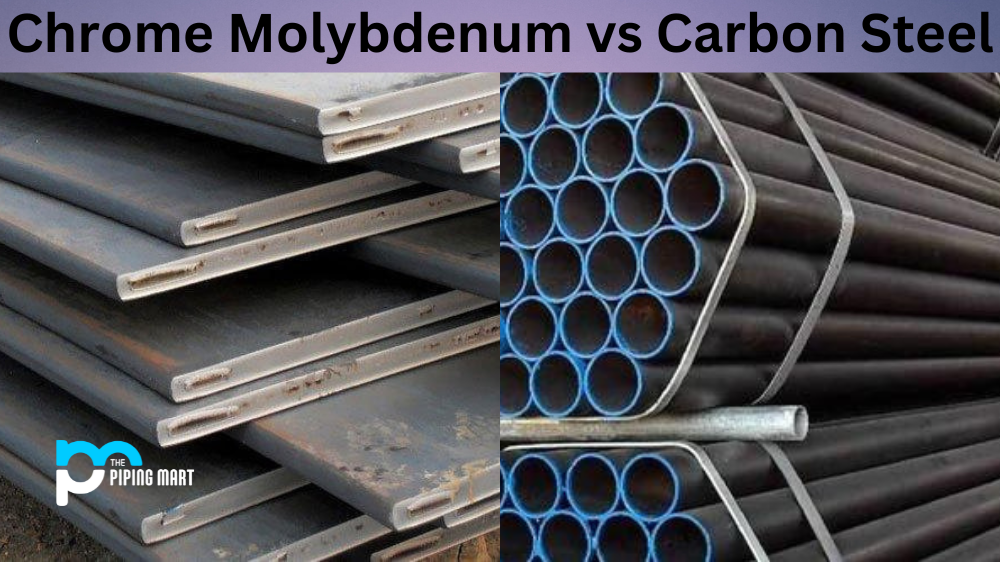When choosing the perfect metal for your project, the decision can be daunting. Two of the most popular metals used in industrial settings are chrome molybdenum and carbon steel. Both are renowned for their durability, strength, and versatility. However, each metal has unique properties and advantages, making it better suited for different applications. In this blog, we’ll explore the qualities of chrome molybdenum and carbon steel and help you decide which one to choose for your project.
What is Chrome Molybdenum?
Chrome molybdenum is an alloy of chromium and molybdenum, providing exceptional corrosion resistance, high-temperature strength, and toughness. It is commonly used in the oil and gas industry, power generation, chemical processing, and aerospace applications. Chrome molybdenum is preferred for applications that require high-temperature strength and corrosion resistance. The alloy has a relatively low carbon content, which makes it easy to manipulate and weld. It is commonly used to manufacture pressure vessels, heat exchangers, and boilers.
What is Carbon Steel?
Carbon steel is an alloy made from iron and carbon. This alloy is the most widely used metal in industrial settings and is known for its strength, durability, and low cost. Unlike chrome molybdenum, carbon steel is not an alloy and contains no other elements apart from iron and carbon. Its high carbon content makes it harder, more brittle, and less ductile than other metals. Carbon steel is used to manufacture construction materials, pipes, and machined parts.
Difference Between Chrome Molybdenum and Carbon Steel
The decision to choose between these two metals depends on the specific application. Chrome molybdenum is the go-to option for applications requiring high-temperature strength, corrosion resistance, and toughness. On the other hand, carbon steel is a suitable option for applications requiring high strength, durability, and low cost. Carbon steel is the more popular option for manufacturing pipes and construction materials. At the same time, chrome molybdenum is preferred for manufacturing pressure vessels and heat exchangers in the oil and gas industry.
Cost
When it comes to the cost, carbon steel is cheaper than chrome molybdenum. Carbon steel is widely available and easy to manufacture, while chrome molybdenum is expensive due to its high nickel and chromium content. The cost of these metals will also depend on the required specifications, size, and quantity.
Weldability
Both chrome molybdenum and carbon steel are easy to weld. However, welding chrome molybdenum requires special precautions due to its high nickel and chromium content. Welding chrome molybdenum requires preheating to reduce the risk of cracking. Carbon steel, on the other hand, is easy to weld and can be welded using standard welding techniques.
Conclusion
In conclusion, choosing between chrome molybdenum and carbon steel depends on the specific application, cost, and required specifications. Both metals are popular in industrial settings and are known for durability and strength. Chrome molybdenum is preferable for applications that require high-temperature strength and corrosion resistance, while carbon steel is suitable for applications that require high strength, durability, and low cost. Whether you choose chrome molybdenum or carbon steel, it is essential to adhere to the recommended safety precautions when handling these metals.
Meet Heer, a dynamic and driven writer learning tricks of her trade in the metal industry. With a background in Digital Marketing, Heer brings a unique perspective to her writing, sharing valuable insights. Apart from blogging she like reading and hiking.




